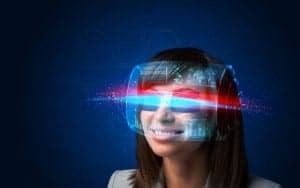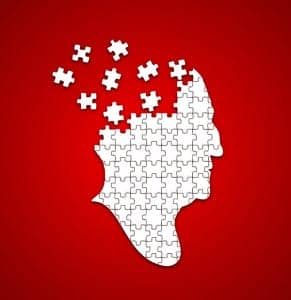Podcast: Download
Subscribe: Apple Podcasts | RSS
![]() She disappeared in a flash, but when I closed my eyes, I could see her beautiful face looking pleadingly in my direction.
She disappeared in a flash, but when I closed my eyes, I could see her beautiful face looking pleadingly in my direction.
Reads like romantic fiction, doesn’t it?
It’s actually your iconic memory recalling a visual stimulus in its technicolor glory.
In this post, you’ll learn all about iconic memory, why it’s important and how to improve it to enable better memory and recall. I’ll also break a few myths about picture-perfect memories.
Here’s what I’ll cover in this post:
- What Is An Iconic Memory?
- Why Iconic Memory is Not The Same as a Photographic Memory
- How is Iconic Memory formed?
- George Sperling & Other Experiments
- How Does Iconic Memory Move to Long-Term Memory?
- What Function Does Iconic Memory Serve?
- How Can You strengthen your Iconic Memory?
What Is An Iconic Memory?
Iconic memory is one type of sensory memory.
It is a short-term visual memory and lasts only a few seconds before getting discarded.
Your brain uses iconic memory to remember (for a brief time) an image you have seen around you.
Your sensory memory stores all information that you experience through your five major senses – touch, taste, sight, hearing, and smell. Check out these sensory memory exercises for a wild, mental adventure.
Such storage of all stimuli is an automatic response by your brain. If sufficient attention is given to this stimulus, the information may then pass into your short-term memory, and from there, it can get encoded into your long-term memory.
However, in most cases, sensory information is thrown out within a few seconds.
This Puts The “Icon” In Iconic
When some kind of sensory input enters your visual system, it goes into your iconic memory. The visual system includes the iconic memory, visual short-term memory and long-term memory.
Iconic memory is simply your brain’s way of processing visual information. The brain sees this information as distinct flashes or ‘icons,’ hence the name iconic.
For instance, imagine you are driving through the countryside and a lovely cottage with a red front door flashes past. You continue to drive, but can still see the “image” in your mind’s eye.
This after-image of the cottage in your mind’s eye even after it ceases to exist in your visual plain is the working of your iconic memory.
Here are some other examples of iconic memory:
- Your friend is reading a book, and you ask her which books is it. Your friend shows you the cover of the book for just a brief moment before hiding it, leaving you with only the impression, or iconic memory, of what the book’s cover looked like.
- You come home one evening and as you turn on the living room light the bulb burns out, leaving you in darkness. But your mind’s eye can still visualize (albeit briefly) what the room looked like in the luminance of the bulb.
In other words, your brain takes a snapshot of every image it “sees” and stores that as an after-image only for a few seconds in your iconic memory. Apparently, this happens in your brain, even if you have aphantasia.
The question is… how is it like a camera taking a picture?
Is it the same as a photographic memory?
Iconic Memory is Not The Same as a Photographic Memory
Let’s get one thing clear.
Photographic memory does not exist.
The phenomenon where you have instantaneous recall of any and all events by uniting your visual, spatial, audio, and verbal memories is not possible by humans.
You may have heard that Teddy Roosevelt could repeat aloud entire newspaper pages as if he was reading from it, or of artists like Arturo Toscanini, who was able to conduct the opera from memory after his eyesight became too poor to read the music.
Many world champions and memory experts like Nelson Dellis can memorize and recall many digits of Pi, but there is no verified case which shows memory working like a camera with total and complete recall.
But what if you can remember your experience in great detail – right down to the color of the car that you took to go to Disneyland when you were five years old? Does that mean you have a photographic memory?
Simple answer: No.
What you can have is an eidetic memory – a memory that is very vivid and has great potential for recall.
However, to clarify – eidetic memory is not photographic memory. It simply means you can remember many things in great detail, but not all the details.
More importantly, eidetikers may even invent details that were never there.
Quick side note:
Some researchers found that a mutated fruit fly could potentially possess a form of photographic memory.
Over the course of their brief lives, a fruit fly with a boosted CREB gene could have a form of photographic memory. While humans also share DNA with fruit flies, the potential for a similar boost in humans is yet to be researched.
So, if iconic memory isn’t photographic, why do we even need it?
It seems unimportant, right?
Maybe not. You’ll know in a minute.
Let’s first understand how iconic memories are made.
How Is Iconic Memory Formed?
The occipital lobe is the central part of the brain involved in iconic memory. This lobe is responsible for processing and regulating visual information.
When you “see” something, the visual information is received by the photoreceptor cells in the eyes and sent to the occipital lobe. Here it is stored for a few milliseconds before being it is forgotten or transferred to the temporal lobe.
This visual memory or visual persistence is then converted from visual short-term memory to long-term memory by the hippocampus, which is located inside the temporal lobe.
There may be psychological visual persistence of a visual stimulus for some time after its physical offset. There are three senses where it can persist.
The Three Persistences
The first is neural persistence which occurs when neural activity continues after the stimuli are gone.
The second is visible persistence – when you continue to see an image even though it is gone, such as with a flash of bright light.
The third is informational persistence – when an observer continues to retain information about a visual stimulus for some time after the stimulus is gone.
In 1980, Max Coltheart performed research into the three stages of visual persistence.
His study also suggests that any physical stimulus must be temporarily attached to a representation in semantic memory. However, episodic memory is not involved in this process. This temporary storage of information is what constitutes iconic memory.
Iconic memory capacity is also extremely brief. Usually, the duration of iconic memory is less than one second, and this duration is fixed irrespective of how long visual stimulus is displayed.
Iconic vs Echoic Memory
The iconic memory and echoic (auditory) memory are the two most extensively studied sensory memories.
The other main types of sensory memory include touch or haptic memory, taste or gustatory memory, and smell or olfactory memory.
One big difference between iconic memory and echoic memory is regarding the duration and capacity.
While echoic memory lasts up to 3-4 seconds, iconic memory or short-term visual memory lasts only up to one second. However, while iconic memory can preserve 8-9 items, the capacity of the echoic memory is 4-5 items.
George Sperling & Other Experiments With Iconic Memory
American cognitive psychologist George Sperling documented the existence of iconic memory.
Cognitive psychology is the study of mental processes such as memory, perception, problem-solving, attention, language use, etc.
Through several experiments, Sperling showed that humans store a perfect image of the visual world for a brief moment – as icons – before it is discarded from memory.
However, it was psychologist Ulric Neisser who in 1967 labeled this form of quickly fading visual memory as iconic memory.
Sperling’s initial experiment used a matrix with three rows of three letters. The participants were asked to look at a visual display of letters, for a short period, and then recall them immediately. Under this technique, subjects were able to, on average, recall 4-5 letters of the 9 they were given.
The results helped Sperling conclude that our short-term visual memory can hold the information even if it is exposed to it for a few seconds.
He reasoned that the reason the subjects were not able to recall all of the letters was that this memory disappeared in less than a second.
Sperling didn’t stop there. Next, he tried a variation to this experiment, known as the partial report method.
In this partial report method, after the visual display of letters, Sperling sounded a high, medium, or low tone. The tone was a cue for the participants. Depending on which tone was sounded, the participant read the high, medium, or low row of letters.
This time around, when the participants had a cue they were able to recall more letters. The partial-report experiments determined that even though we see all the visual image of letters, we cannot recall them all because the memory is fleeting.
While Sperling’s experiments with memory tasks mainly tested the information related to a stimulus, others such as Coltheart performed directs tests of visual persistence.
Coltheart also questioned the relation between visual persistence and iconic memory.
In his report, Iconic memory and visible persistence. Perception and Psychophysics, (27, 183-228), Coltheart says “Iconic memory and visible persistence are often treated as the same. However, whether these two phenomenon are the same is an empirical question.
“The earlier review established that two properties of visible persistence are 1) an inverse relationship with stimulus duration and 2) an inverse relationship with stimulus luminance, or intensity. Iconic memory must exhibit these two properties before it can be equated with visible persistence.
“There is no evidence that the duration of iconic memory and luminance are inversely related. Furthermore, although there is some evidence that increasing stimulus duration has an effect on iconic memory persistence, this effect is direct rather than inverse. Thus, visible persistence—which is very sensitive to physical display features—and iconic memory seem to behave differently.”
Nearly two decades after Sperling’s original experiments, visual persistence and informational persistence emerged as two distinct components of visual sensory memory.
How Does Iconic Memory Move to Long-Term Memory?
A lot of focused attention is needed to move information from iconic memory to durable storage – which is your short-term memory and subsequently, your long-term memory.
The human memory system works on encoding, storage, and retrieval of information. In 1968, Atkinson and Shiffrin suggested this model for human memory. It includes three components – sensory memory, short-term memory, and long-term memory.
The Human Memory System Simplified
Here’s a simplistic explanation on how your memory system works:
In the first stage, any incoming sensory or perceptual information is held in the sensory memory. The information gathered through the senses is an exact copy of what you perceive. This information is stored in your sensory memory for a very short duration.
For instance, as soon as you get a visual stimulus – you see an apple – it is processed by your eyes and moved into the occipital lobe. Next, recognition occurs, and this information is then placed into iconic memory. All this takes place very quickly.
From the iconic memory, only a limited amount of information that you consciously pay attention to moves into the visual working memory – this is your short-term memory for visual stimuli. Everything else is discarded.
This short-term memory does not have unlimited capacity. It can only store a limited amount of information.
Conscious perception makes a significant difference in the memory process.
The information can remain in the working memory for several minutes before being discarded or stored in long term memory.
Over time, memories get etched in long-term storage. For this, you need rehearsal and petition to practice your recall of information which enables you to move information from short-term to long-term memory.
What Function Does Iconic Memory Serve?
If iconic memory lasts only for a few microseconds, is it at all important?
Absolutely!
The role of iconic memory in creating new memory is significant.
This form of sensory memory provides a steady stream of visual information to the brain, which can then be processed by your short-term memory into more stable and long-term forms of memory.
Scientists are also using iconic memory to make revolutionary discoveries. One of them is the role of this memory in change blindness or our inability to detect significant changes in our visual field.
In certain experiments, they discovered that we tend to have trouble with change detection from one scene to another if we face brief intervals between them.
According to researchers, that happens because that delay or interruption wipes out the iconic memory of the scene, which makes detecting differences all the more difficult if not downright impossible.
Iconic memory loss has also been linked to the onset of Alzheimer’s disease, so it may be prudent to strengthen this type of sensory perception.
How Can You Strengthen your Iconic Memory?
Since iconic memory is one type of sensory memory, improving your overall sensory perceptions will result in better retention of visual information.
Attention also plays a vital role in not only transferring information from iconic to working memory but also when the iconic memory is formed.
According to this study, the formation of iconic memory is disrupted when attention is diverted even if that happens for a brief period of time.
The human mind is capable of faultless information processing, just like a computer. It takes in information, organizes and stores it to be retrieved at a later time.
However, for this information processing to be accurate, you need to be aware and deliberate in your learning.
Be Intentional To Have Better Memory
When you are intentional, you perceive things better.
Why is that?
Because you are paying attention to everything around you – all your senses are sharper and focused on absorbing the information around you.
Greater attention means better perception, which results in good memory.
Memory exercises can be used to strengthen your attention which in turn will improve retention and recall.
However, your memory improvement training should always be linked to memorizing information that will immediately improve your life. It should always be measurable since tracking your outcomes leads to rapid improvement.
This is where creating Memory Palaces using the Magnetic Memory Method can come in handy.
It enables you to unlock the power of all types of memory – autobiographical, sensory, episodic, semantic, procedural and more so that you can move information into long term memory faster and with predictable and reliable permanence.
Keen to unlock your natural ability to learn and remember anything fast?
Why not try the Magnetic Memory Method today?
Related Posts
- Next Level Memory Training Secrets with USA Memory Champ John Graham
John Graham, 2018 USA Memory Champion teaches you the habits and strategies that helped him…
- Why They Don't Teach Learning And Memory Techniques In Schools
If you're looking for information about learning and memory techniques and wonder why on earth…
- How to Memorize Something Fast: 5 Simple And PROVEN Memory Techniques
Wondering how to memorize things fast? Read this post for 5 solid steps you can…










2 Responses
Hi Anthony.
Yes, I remember my practice with recalling information when I was in high school and college to pass the tests. I need to do the same to pass Life and Health Insurance, but am now using “The Magnetic Memory Method.”
Thanks for the iconic memory lecture.
Thanks for stopping by to say hello, Maricela.
I’m glad you have the MMM on your side now. These little details about all the types and kinds of memory and how they can guide our practice is part of how this approach to memory works.
You’re a great and consistent student of memory, so let the Life and Health insurance information flow with total memory abundance. 🙂